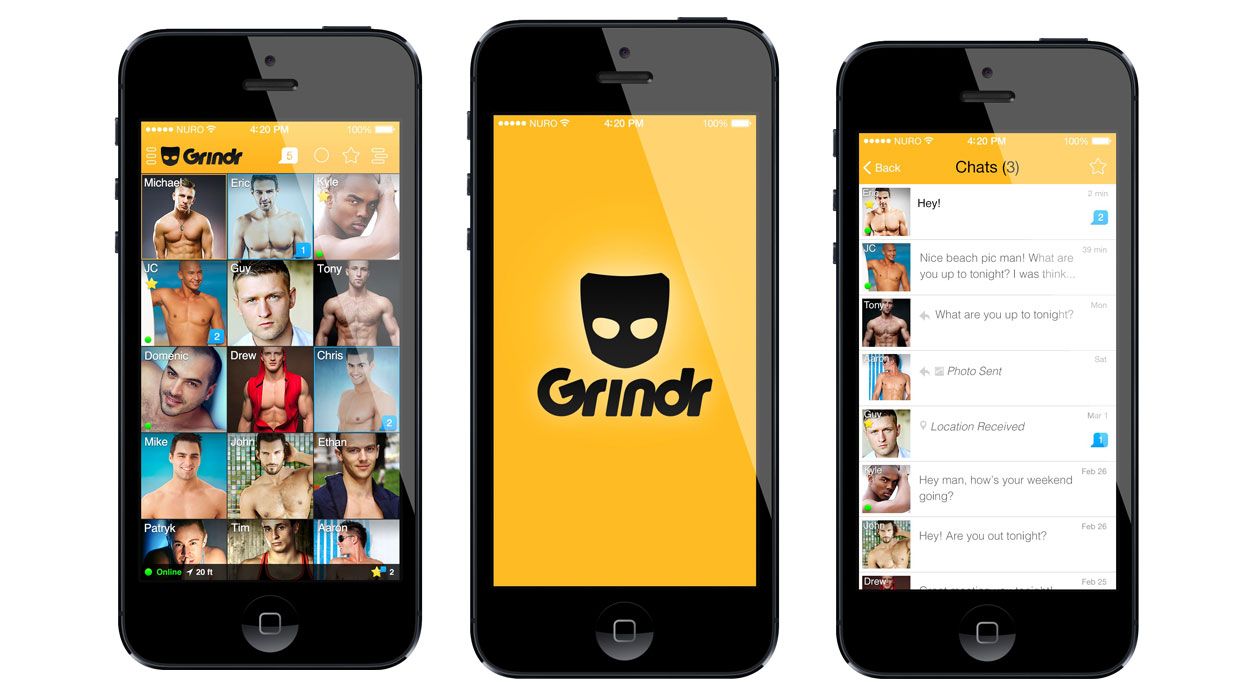Visibility and invisibility are at the core of queer experience, history, identity and life. The very concept of LGBT history month is tied to the queer project of rendering the invisible, visible.
“We have a history too!” was once the slogan of this month of recognition, and making ourselves seen is central to this project of identification.
This visibility is complex, simultaneously signifying self-identification (“I am what I am, I am my own special creation”) pride (“I’m coming out, I want the world to know, got to let it show”) and erotic desire (“love to love you baby”). From Muybridge to Mapplethorpe, a queer historiography of photography must inevitably acknowledge these three interwoven themes (though they are by no means always present in equal measure, and such historiography does not require that the photographer, nor the photograph be ‘queer’).
Today, thanks to the ubiquity of mobile digital platforms, the ‘selfie’ has become a photographic signifier in mainstream popular culture. So ubiquitous have these self-produced images become that they now occupy that peculiar place in culture, simultaneously an object of derision and a practice of everyday life. Yet the recent hype around what is, in effect, an amateur self-portrait, obscures a longer history of mobile phone photography within queer cultures and practices (there is that queer invisibility at work once more).
LGBT folk gravitated towards digital forms of communication and identity performance with a deep sense of investment much earlier than their heterosexual compatriots. The queer self became ‘networked’ far earlier (and far more easily) than the straight self. In part this was due to necessity. Being seen as queer is never easy when the world one lives in is coded as a priori heterosexual. But there was something more in this migration to the digital, this leap into cyberspace. There was a gravitational pull that promised unprecedented visibility to the queer individual and the illusion of self-determination in how one might be seen by others.
In spite of low bandwidth and ‘the poverty of the code’ queer people quickly populated their online worlds with images, often of themselves. Gay men, (their privileged gender position within patriarchal society often providing them with access to greater financial resource) were perhaps at the vanguard of these practices of self-imaging and self-imagining. Indeed, my own research and experience inevitably leads me to focus on gay male visual culture in the rest of this essay. But Trans people have found a voice through digital visuality as have lesbians and the panoply of non-heteronormative identities that huddle under the broad umbrella of ‘queer’.
In a time when one possesses the means of representing the self with unparalleled ease, it is ironic that the modes and styles that gay men employ to represent themselves online have become increasingly narrow. This has led some (perhaps pessimistically) to claim that gay male desire has been distilled down into the search for just one, perfect specimen. The selfies one finds on Grindr, or Scruff or Growlr, paradoxically exhibit both distinction and uniformity. This one shows off his muscles, that one shows off his torso, this one his rugged jawline, that one, his tattoos. Yet as we scroll through our favoured applications, those chocolate boxes of delight and promise, one becomes aware of a fundamental similarity, a sense of equivalence; variations on a theme.
We all begin to look a little bit the same. Whether White, Black, Asian or Mixed. Whether shorter or taller, or larger or smaller. We all appear to echo a certain something. A wanting. An invitation. A desire.
Of course, in a way, that is what these apps promise. Invitations to desires, a satisfaction of the want, an opportunity to scratch that itch. Is it unsurprising that we all seek to impress on that distracted browser our own desiring selves? Yet one would imagine that individuality, not uniformity, would be the marker of success, no?
So why do our gazes appear to be so similar? Why do our pose and poise and performance begin to feel undifferentiated? Why do I experience Das Unheimliche – moments of the uncanny – when I hit the refresh button or scroll down for more?
Of course, we are not uniform – not completely. In Camera Lucida Roland Barthes wrote of the Punctum – a pricking – that captures the viewer, when (s)he browses through photographs and is arrested by a detail, an accidental inclusion, that captures us, holds us in its purview. Elsewhere, I have written of the ways in which the Punctum operates as an antidote to the increasing uniformity of the selfie in gay male culture. It is the Punctum that I look for when browsing online. When I scroll through applications, when I flick through lists of selfies at a rate of knots, this is what I am seeking. That moment of connection. That split second that captures. That freezing of my gaze. As if a shutter has momentarily opened, and offered me something more than just you, staring back at me, on my phone screen.

